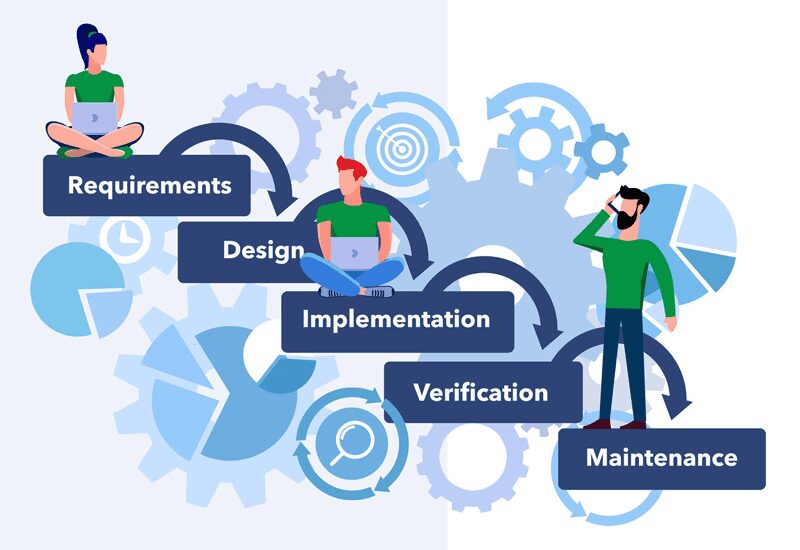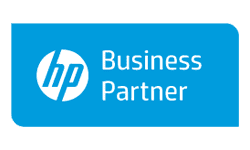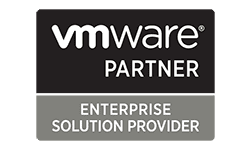What is Waterfall? Understanding the Pros and Cons of this Classic Project Management Approach
Project Management Methodologies: Check Out this Comprehensive Guide to Learn More About Waterfall
Carley Kimball, Media Specialist
5 Min Read
Just like other project management methodologies such as agile and scrum, the waterfall approach can trace its beginnings back to the software development community.
Waterfall was first introduced by Winston W. Royce, an American computer scientist, in 1970. The traditional approach, known for its strict structure and linear timelines, is gradually being replaced by agile, scrum, and other modern project management methodologies. However, waterfall is still used today by professionals across various industries and considered to be the best option for certain projects.
What is Waterfall?
“The waterfall model is named so because it mimics a waterfall in its trajectory,” explains linguistics engineer Ahad Waseem. “Just like water flows down in one direction, your operations will flow from one step to the next. The flowing water cannot take a u-turn and flow back to a point it has already passed from. Similarly, this management method doesn’t allow you to return to previous phases. The only way to do so is to start over from the beginning.”

In Royce’s original model, the phases of waterfall, according to the University of Missouri-St. Louis, include:
- Requirements: All requirements are gathered up front through communications between the team and stakeholders.
- Design: After the requirements phase is complete, the project moves into Logical Design and Physical Design subphases. From information gathered in the first phase, analysts begin designing independently of any hardware or software system. Analysts can then begin creating a Physical Design dependent on the specifications of specific hardware and software technologies.
- Implementation: In this phase, programmers can start writing all the code that gives functionality to the project. Programmers take into consideration the project requirements and specifications, and code the applications.
- Verification: In this phase, the project manager ensures that the project is meeting customer expectations. However, in real-world practice, this stage is often overlooked, sometimes impacting customer satisfaction.
- Maintenance: The customer is now using the developed application. As problems arise, whether stemming from improper requirements determination, mistakes made in the design process, or changes in a client’s requirements, adjustments can be made to the system during this phase to appease stakeholders.
A typical list of waterfall tasks would include scope and plan project, gather and document requirements, design application, develop application and perform unit tests, conduct system testing, perform UAT, fix application as appropriate, and deploy application, author Rick Sherman notes in his book Business Intelligence Guide.
Benefits of Waterfall Methodology
Although Waterfall has fallen in popularity over the years, subject matter expert Patrick Rockwell advises on the types of situations in which using the waterfall method can be beneficial.
“Though less common these days, when your end product’s requirements are fixed yet time and money are variable, choose the waterfall method,” Rockwell explains. “I like to imagine a scientist doing research for a big company—through trial and error, he’ll likely restart his whole process many times and at different stages to get the coveted final result. Through waterfall project management this behavior is anticipated and even preferred! This enables members to adjust and re-think their approach time and time again.”
This method of project management is easy to learn, and therefore, easy to implement. With an emphasis on documentation, following a project’s timeline from start to finish is simple. If teams are fluid, there isn’t much time needed to catch a new team member up to speed – all necessary documentation should explain each key aspect of the process and product.
The Waterfall methodology is a straightforward and well-defined project management methodology with a proven track record, according to Adobe. With a start phase devoted to laying out clear and detailed requirements, team members can easily manage their time and work efficiently through stages, always clear on the next steps in the process.
In this same regard, a well-structured waterfall approach allows for a simple way to track progress. Clearly defined milestones make it easier to anticipate the length of project completion.
The Downfalls of Waterfall
While the waterfall model quickly became an established way to manage projects across industries, there’s reasons why it is being replaced by newer, more flexible approaches in the modern workplace.
The main downside of Waterfall methodology, according to Forbes Advisor, is that it can take a long time because it requires approval for each phase before moving on to the next one. Timelines can quickly lengthen when there are hold-ups on specific phases. The rigid nature of waterfall requires one phase to be completed before the team can move onto the next one.
Although the requirements phase is grounded in the idea of clear expectations for all stakeholders involved, those in the business world can attest to the fact that projects don’t always pan out that way.
It is often difficult to get complete business requirements up front in a project, Sherman notes, because businesspeople have not really thought through in detail what they need, and business requirements can change during the project. Taking a more agile approach allows for flexibility in this area, where waterfall does not allow changes or additions to the plan until the very end.
This can cost businesses on both sides valuable time, money, and resources due to the fact that if the project doesn’t fit fluid requirements, the entire process must start back at phase one.
Waterfall methodology can certainly prove beneficial in certain instances within the modern workplace, especially when there is clarity in requirements in the forefront of the process. However, more flexible approaches are quickly becoming the norm in workplaces, especially as values shift to more innovative and flexible mindsets that can save time and money in the long run.




